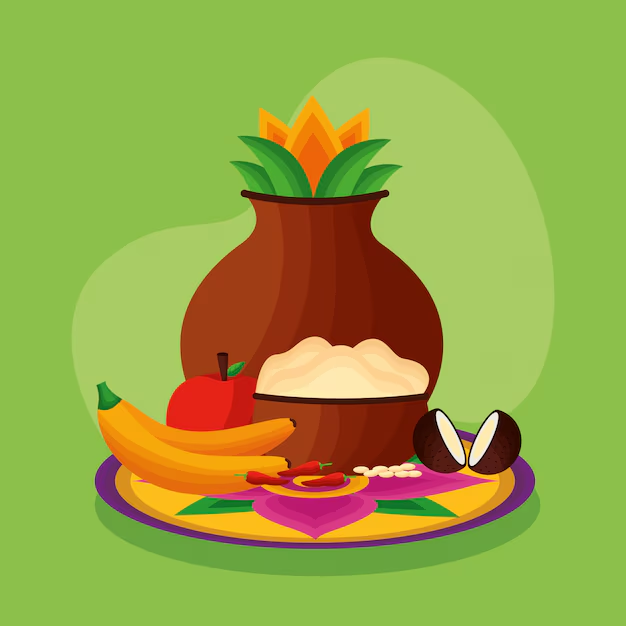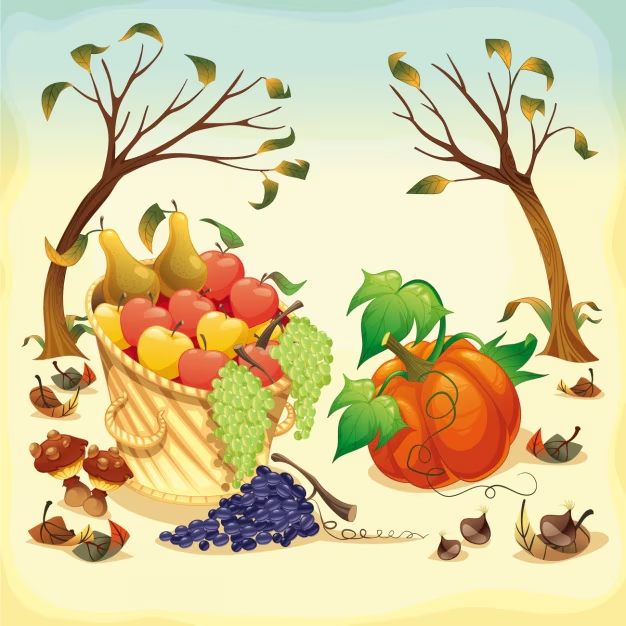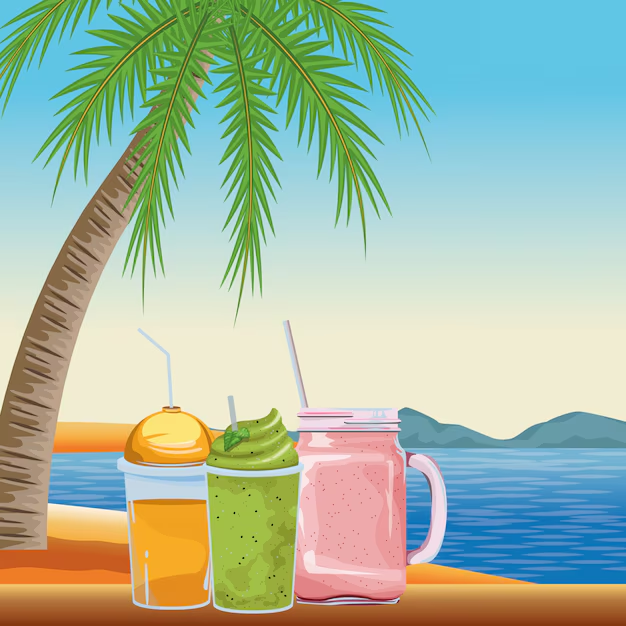Food We Eat – A Complete Guide For Class 3 EVS Chapter 8
Welcome to iPrep, your Learning Super App. Our learning resources for Chapter 8, “Food We Eat,” in Class 3 EVS are meticulously designed to ensure students gain a comprehensive understanding of this essential topic. These resources include detailed notes, interactive exercises, and practical examples that cover the entire spectrum of key concepts. From fundamental principles of nutrition and food groups to the significance of traditional and cultural food practices, students will explore the diverse range of foods consumed globally. Additionally, the materials emphasize the importance of balanced diets, food safety, and sustainable eating habits to promote overall health and well-being.
The concept of “Food We Eat” in Class 3 EVS delves into the foundational principles of life by exploring the essential characteristics that define our dietary choices. It emphasizes the importance of various food groups, including fruits, vegetables, grains, and proteins, and how each contributes to our overall health and development. The chapter also highlights cultural diversity in food practices, illustrating how geography and tradition shape what we eat. Furthermore, it encourages students to understand the significance of making healthy food choices and the impact of food on our bodies and well-being.
Special Foods and Celebrations: Chhappan Bhog
As mentioned in the chapter “Food We Eat” From Class 3 EVS, Chhappan Bhog is a feast that includes 56 different dishes, symbolizing a harmonious blend of six tastes:
- Sweet (Meetha)
- Spicy (Teekha)
- Astringent (Kasaila)
- Sour (Khatta)
- Salty (Namkeen)
- Bitter (Karva)


This feast is often prepared for festivals and auspicious occasions to honor guests, friends, and family. Different foods, some sweet, sour, spicy, or bitter, cater to diverse tastes.
Reflection:
Talk to the elders in your family. Why do we need to eat and drink?
The Story of Shirin – The Runner
the chapter “Food We Eat” also covers a story. It goes like this-
Shirin, a fast runner in her class, wanted to improve her performance and asked a champion for advice. The champion emphasized the importance of practicing regularly and eating a balanced diet. While Shirin enjoyed rice and potatoes, she was encouraged to eat a variety of foods, including:
- Vegetables
- Fruits
- Grains (like rice, ragi, wheat)
- Pulses (dal)
- Nuts

By eating a balanced diet and practicing regularly, Shirin became healthier and won a medal in a running event for her school.
Why do we need to eat healthy food?
Chapter 8 from class 3 EVS named “Food We Eat” mentions that Food We Eat should be healthy and provide our bodies with essential nutrients that support growth, energy, and overall well-being. Healthy foods boost our immune system, help maintain a healthy weight, improve mental health, and reduce the risk of chronic diseases. They also promote good digestion, enhance skin and hair health, and encourage lifelong healthy habits. In short, a balanced diet is vital for maintaining optimal health and preventing illnesses.

Daily Food Choices
Tick the food items you eat regularly from the list below:
| Food Items | Tick if Eaten Regularly |
| Vegetables | |
| Salads | |
| Fruits | |
| Sweets | |
| Rice | |
| Dal | |
| Roti | |
| Milk | |
| Snacks | |
| Lassi | |
| Juice | |
| Paneer |
What foods from this list should be part of a balanced diet?
Seasonal Foods and Varieties

The food we eat differs depending on the season. For example, in summer, we enjoy cold drinks like tender coconut water, while in winter, we relish warm soups and stews.
Make a list of fruits and vegetables available during different seasons:
| Season | Fruits & Vegetables | Special Foods |
| Summer | Mangoes, Melons | Ice cream, Tender Coconut |
| Winter | Apples, Oranges | Stews, Soups, Warm Drinks |
People across different regions of India also enjoy various dishes. Have you heard of any foods that you haven’t tried yet? Discuss these with your friends or family.
Drinking Water and Staying Hydrated

The chapter “Food We Eat” mentions that during the summer, we tend to sweat more and lose water from our bodies. It is essential to drink plenty of fluids, such as:
- Water
- Buttermilk
- Nimbu Pani (Lime Water)
- Aam Panna
- Sugarcane Juice
- Tender Coconut Water
How often do you drink water? Remember, our bodies need water to survive, which is why “water is life.”
Food Sources: From the Field to Our Plate

Do you know which one of the food we eat are grown in the fields? Here are some examples:
- Wheat
- Rice
- Pulses
- Vegetables
Different parts of plants provide us with different foods. Tick the items below that you eat:
Plant Part Examples Tick if Eaten Leaves Spinach (Palak), Fenugreek (Methi), Coriander Fruits Guava, Sapota, Apple, Mango Roots Carrot, Radish, Beetroot Stems Potatoes, Bamboo Shoots, Ginger, Onion Seeds Grains, Pulses, Dry Fruits
We also eat animal-based products such as milk, curd, ghee, cheese, paneer, honey, eggs, and meat.
Puzzle Time
Can you name a common food ingredient that doesn’t come from plants or animals?
Reflection Questions
A. Discuss:
- Why do we need different kinds of food?
- Why do we eat seasonal foods?
- How can we tell if a food is healthy or unhealthy?
- Why is it important to avoid wasting food? Can you think of ways to reduce food waste at home?
B. Write:
- List the fruits and vegetables eaten in your family.
- Write the recipe for your favorite dish.
- Name a food item that includes both plant and animal-based ingredients. Example: Lassi (curd from milk and sugar from sugarcane).
C. Draw:
- Draw three plates with food items that you eat for breakfast, lunch, and dinner.
The Importance of Eating Together
Eating together is a great way to bond with family and friends. In class, you can bring a fruit and prepare a fruit chaat or salad to share with your classmates.
Hosting a Guest

Imagine a guest arrives at your home unexpectedly. What food would you serve, and why? Think about how the food reflects your hospitality and culture.
Conclusion
In conclusion, CBSE Class 3 EVS Chapter 8, “Food We Eat,” serves as a vital resource for young learners to explore the rich tapestry of food and its significance in our lives. Throughout this chapter, students have discovered how diverse food choices are influenced by cultural traditions and local resources, fostering an appreciation for the variety of dishes enjoyed around the world. The chapter also emphasizes the importance of making healthy food choices, highlighting how different food groups contribute to our well-being and overall health.
By engaging with concepts such as seasonal foods and the importance of balanced diets, students are equipped with the knowledge to make informed decisions about their nutrition. CBSE Class 3 EVS Chapter 8, “Food We Eat,” not only teaches the significance of different foods but also encourages students to embrace cultural diversity and develop lifelong healthy habits. As they continue their learning journey, the insights gained from this chapter will help shape their understanding of food and its impact on their lives.
Practice questions on Chapter 8 - Food We Eat
Get your free Chapter 8 - Food We Eat practice quiz of 20+ questions & detailed solutions
Practice Now








